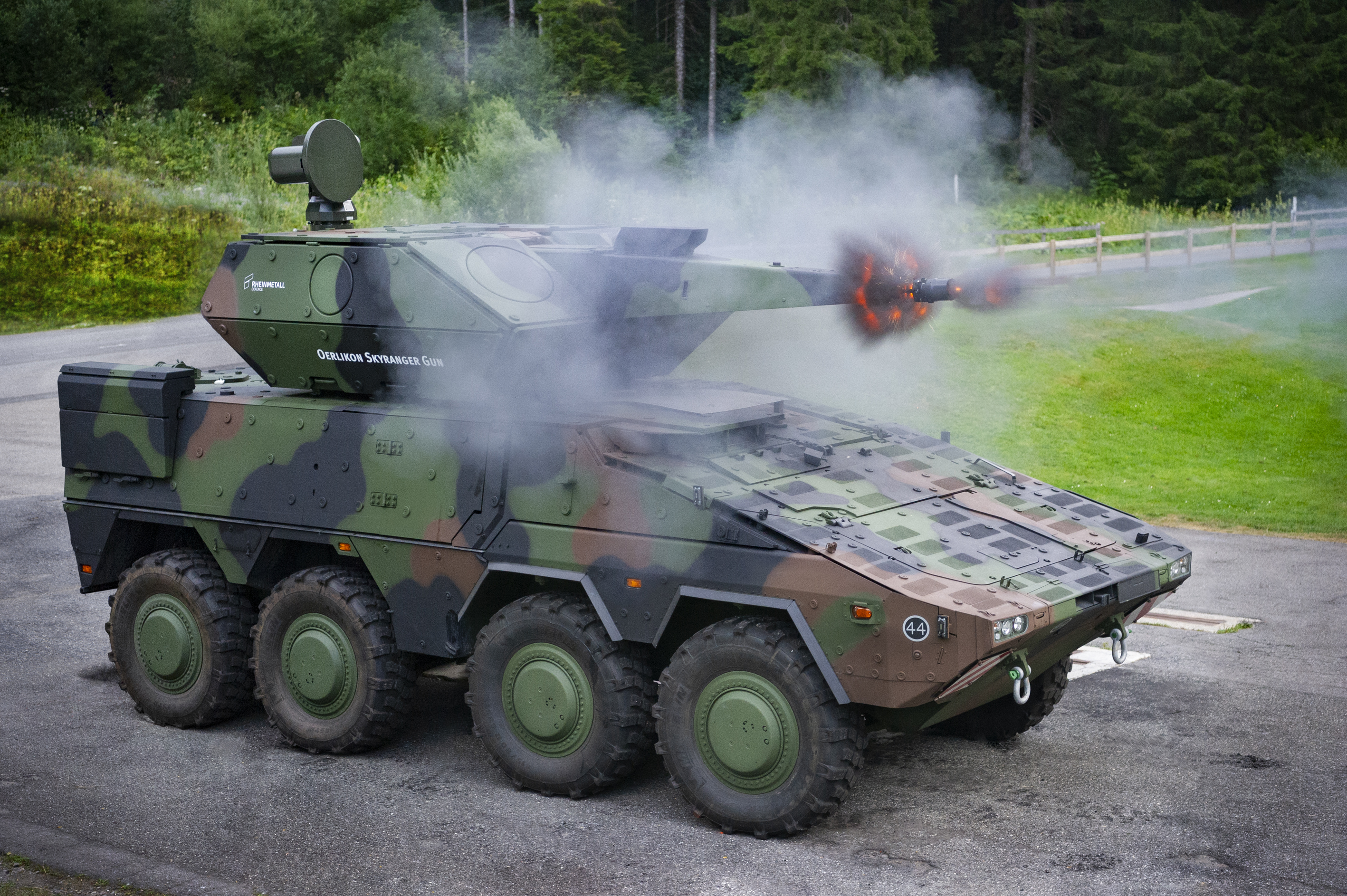Rheinmetall presented the Oerlikon SKYRANGER 30 short range air defence to an expert audience for the first time at an international press conference yesterday. The system is integrated into an unmanned turret which, weighing less than 2.5 tonnes, can be made mobile with a 6×6 wheeled vehicle or a larger or tracked vehicle.
Changing Battlefields
Recent conflicts such as the one in Nagorno-Karabakh have highlighted the threat posed by small drones and highlighted gaps in air defence, as pointed out Fabian Ochsner, CEO of Rheinmetall Air Defence (RAD). Drones can blind sensors, overload fire control and attack targets at short range. Due to their small size, low altitude and low flying speed, they are difficult to detect. To be able to engage such aerial targets, a balanced weapon system with passive and active sensors, threat-appropriate effectors and adequate self-protection is required. Accordingly, Rheinmetall has built the Oerlikon SKYRANGER 30, a concept demonstrator that can meet the essential requirements and is made mobile on a BOXER chassis.

RAD has used an S-band AESA radar capable of detecting Class I UAVs as the (active) detection sensor for the first step in the combat chain. Five low-profile transmit/receive modules are distributed around the tower, providing the required 360° coverage. The radar, optimised for small targets, has a detection range of 20 km. Because an active sensor gives away its own position, the Fast InfraRed Search and Track (FIRST) system is integrated as a passive sensor. This monitors the entire environment with high resolution and alerts when targets (pop-up targets) appear.
For the second step – identification and tracking – Rheinmetall has developed a combined sensor head that has a thermal image channel, a video channel and two laser rangefinders. Last year, the sensor was able to prove its performance against classic and novel targets. Alternatively, an available X-band radar could be used for this task.
Oerlikon SKYRANGER 30 C-UAS Methods
As an effector, RAD has further developed the Oerlikon KCA 30×173 mm gun which has been fitted with a single-spool programming unit that enables the use of programmable airburst ammunition. With a maximum cadence of 16 rounds per second, the Ahead projectiles are fired with 160 tungsten projectiles (200 grams in total) at ranges up to 3,000m. The programming releases the projectiles at an optimal distance from the target and creates a deadly fragmentation cone. Tests have shown that even a single projectile can produce a mission-kill and neutralise the drone.
It is important to have high gun elevation and lateral velocities to follow the drone’s movements and a large elevation angle of 85° against drones in a dive attack. To increase stand-off capability, the
SKYRANGER turret offers weight reserves to accommodate a missile system. Both laser-guided missiles and fire-and-forget missiles with IR control are possible, though no selection has been made.
For electronic warfare, the SKYRANGER 30 can be equipped with passive emitter locators that detect radio control signals from the drones and RF jammers that can reliably jam such signals and prevent the drones from completing their mission.
Self Protection
The SKYRANGER 30 system’s self-protection begins with the low profile of the turret, which results in a low silhouette. With two nine-launch Rapid Obscuring System (ROSY) launchers, the crew can quickly set a multispectral smoke screen that removes the weapon system from the view of enemy sensors. A coaxial machine gun is available for direct engagement. The turret is protected against Level 2 ballistic threats (STANAG 4569). The hatch in the centre of the roof, which can be used for reloading, observation or as an escape hatch, is protected to level 4. If the weight balance permits, the entire turret can be protected to level 4.
According to Ochsner, the Oerlikon SKYRANGER is in Technology Readiness Level (TRL) four to five (test setup in operational environment). Firing tests are planned from mid-2021 and TRL six should be reached by the end of the year. No statements have yet been made about possible customers though the first order for the KCE gun is for a naval application.
Gerhard Heiming

